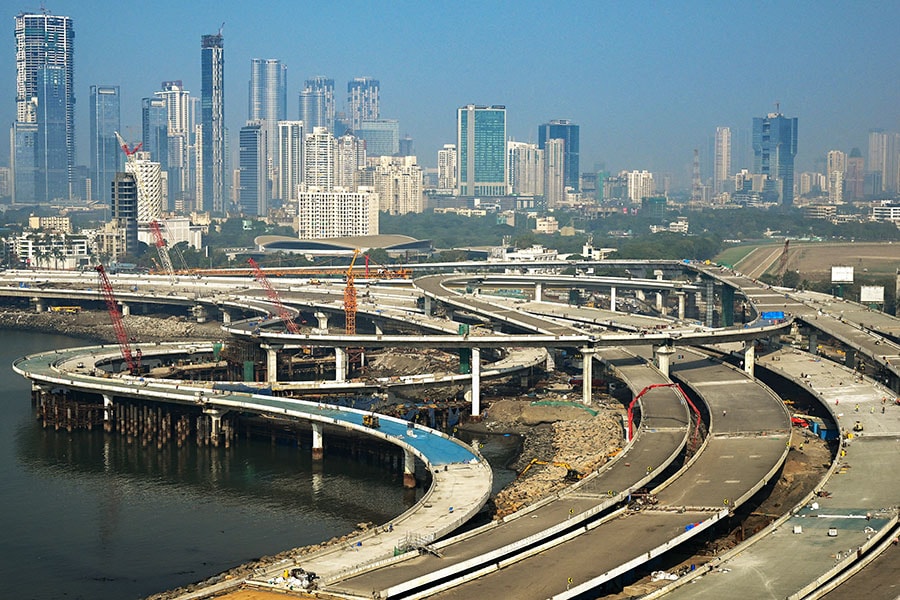
What India's cities should expect from the Union Budget 2024-25
We need to not only sustain, but also further increase investments in cities to make them liveable and to drive economic productivity, job creation, and growth
 Labourers work on an under construction portion of the Coastal Road expressway along the Arabian Sea coastline of Mumbai.
Image: Indranil Mukherjee / AFP
Labourers work on an under construction portion of the Coastal Road expressway along the Arabian Sea coastline of Mumbai.
Image: Indranil Mukherjee / AFP
The Government of India has invested significantly in cities from 2015 onwards through flagship schemes and missions such as Swachh Bharat, Smart Cities, AMRUT (Atal Mission for Rejuvenation and Urban Transformation), and Pradhan Mantri Awas Yojana. If one were to also factor in the XV Finance Commission grants, there has been around 500 percent increase in allocations during 2009-2022. We need to not only sustain, but also further increase investments in cities to make them liveable and to drive economic productivity, job creation, and growth.
The primary responsibility to invest in India’s cities lies with state governments. But there is a need for enablers in terms of new and innovative models of public service delivery and financing. The union government could make specific catalytic investments to incubate such enablers. Here are a few ideas where the funding needs from the union government are low yet the returns for India, as a whole, could be manifold.
1. Municipal Infrastructure Pipeline
The Union Budget should incentivise the creation of a Municipal Infrastructure Pipeline, to complement the National Infrastructure Pipeline (NIP). The NIP is for large projects with an outlay of over Rs100 crore. We need a shelf of bankable, investible projects in our cities to unlock municipal borrowings and private sector participation. Given the challenges in our cities, there is no dearth of requirements. From housing to water supply, from stormwater drains to public transport, from sanitation to parks and playgrounds, and from footpaths to streetlights—we need infrastructure projects to improve the liveability and economic productivity of our cities.In addition to grant funding, cities will need to raise private capital. Municipal bonds are currently feasible only for large cities. Aggregate issuances since the mid-90s are less than USD 2 billion. We need to first create a culture of credit in municipalities, beginning with plain-vanilla bank loans. A Municipal Infrastructure Pipeline will set in motion a virtuous credit cycle to finance urban infrastructure and services.

















